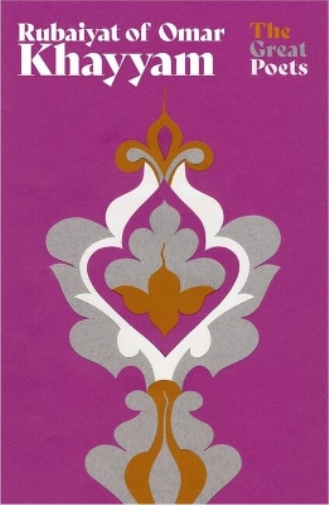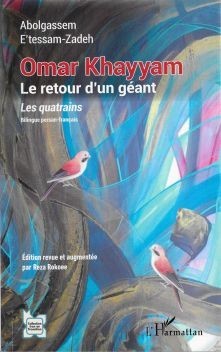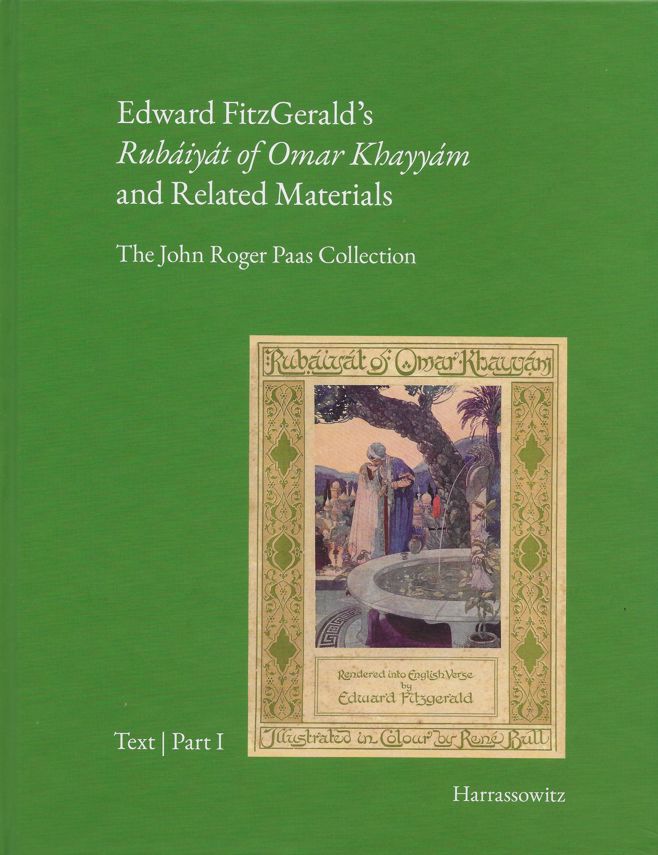Rubaiyat of Omar Khayyam : the best-loved, bestselling poem ever published. Translated from the Persian. Edited by A.D.P. Briggs. London : Weidenfeld & Nicolson, 2023. 160 p.; 20 cm. ISBN: 9781399614122 (The great poets)
Originally published: London: Everyman, 1998
Archives
Omar’s Rubaiyat
Omar’s Rubaiyat. [Translated by Edward FitzGerald]. [S.l.] : Wolf, 2023. 12 cm.
Pack of 75 playing cards, illustrated with Sullivan’s images and the 75 quatrains from FitzGerald’s first edition. Together with a little booklet with instructions how to use the cards as tarot cards.
Abolgassem E’tessam-Zadeh. Omar Khayyam. Le retour d’un géant, Les quatrains
Abolgassem E’tessam-Zadeh. Omar Khayyam. Le retour d’un géant, Les quatrains. Bilingue persan-français. Edition revue et augmentée par Reza Rokoee.
Shaaban Robert’s Swahili Rubáiyát and Its Reckonings
Shaaban Robert’s Swahili Rubáiyát and Its Reckonings. Annmarie Drury
In: Modern Philology 121 (2023) 2, p. 169-191
Translation after the Persianate?
Translation after the Persianate? Omar Khayyam and Late Perso-Ottoman Poetic Connectivity. Mehtap Ozdemir
In: Philological Encounters (2023), p. 1-28
This article focuses on late Ottoman/Turkish translations of Omar Khayyam’s Rubaiyat (“quatrains”) as part of Perso-Ottoman poetic connectivity in the early twentieth century. Situating the reception of Omar Khayyam’s Rubaiyat at the nexus of world literature, literary historiography, and translatability, the article explores the methodological affordances of translation to redress the overdominance of discursive and historical points of rupture in studies of late Persianate literatures. To that end, the article offers a comparative reading of Hüseyin Daniş’s Rubaiyat-ı Ömer Hayyam (1927), Rıza Tevfik’s Ömer Hayyam ve Rubaileri (1945), both of which are based on their co-authored translation in 1922, and Mevlevi Mustafa Rüşdi b. Mehmet Tevfik’s translation of Khayyam’s quatrains (1931–32). By way of specific attention to translation as hermeneutics, this article suggests that translating after the Persianate did not involve a straight shift from regional translation practices to translation proper nor was it exclusively a modus operandi of literary and linguistic nationalism. In drawing attention to how translation can accommodate both synchronic and diachronic mobility, the article therefore calls for alternative comparative methodologies which attend to persistent textual practices as well as conjunctural discourses in literary history.
Edward FitzGerald’s „Rubáiyát of Omar Khayyám“ and Related Materials
Edward FitzGerald’s „Rubáiyát of Omar Khayyám“ and Related Materials. The John Roger Paas Collection. Edited by John Roger Paas. Wiesbaden, Harrassowitz Verlag, 2023. 1184 pages, 3 parts. Part 1+2: Text, XXII, 872 pages; Part 3: Plates, 312 pages. ISBN 9783447120906



